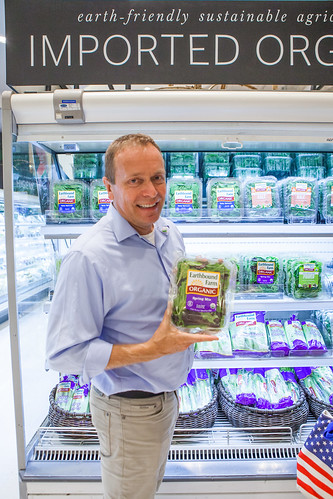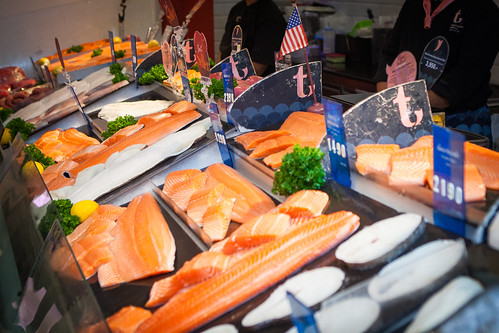 By Max Bennett, OSU Extension Forestry & Natural Resources Extension, Jackson & Josephine Counties
By Max Bennett, OSU Extension Forestry & Natural Resources Extension, Jackson & Josephine Counties
Terry Fairbanks is staff silviculturist for the Bureau of Land Management, Medford District, and a small woodland owner in the Applegate Valley. In this interview, I ask Terry for her thoughts on adapting to climate change in southern Oregon’s hot, dry, fire-prone forests.
Q: Terry, tell us about your background.
TF: I’ve been a forester for over 30 years. I started with the US Forest Service on the Mt Hood, and worked on the Willamette and Umpqua and made my way southward. I switched to the BLM 13 years ago. Most of my career I’ve been a silviculturist. I spent a little while as a timber supervisor. I’m responsible for reforestation, young stand management and I work with the prescription foresters. I also participate in planning efforts at the District level.
Q: What are some of your concerns about climate change in the Rogue Basin?
TF: There are a lot of concerns…one is that that trees planted today won’t be adapted in 50 years. My biggest concern, though, is catastrophic fire. Catastrophic fire takes out a lot of wildlife habitat that you can’t easily replace such as large trees and certain mixtures of species. And it speeds up the transition to non-forest vegetation.
The Douglas Complex fire was 50,000 acres, and we’re still planting 3 years later. We are planting 2 million trees per year. We had a small reforestation program, but now we are spending four months a year and hundreds of thousands of dollars a year to plant behind the fires. So, how do we get the right mix back into plantations when we have a big fire like that? Are they adapted for the future? And there are areas we don’t plant because they are inaccessible or we just haven’t got to them yet.
Q: With reforestation on the Douglas fire, are you doing anything differently?
TF: It’s pretty much business as usual. Some of the climate change adaptation science hasn’t filtered down. We can suggest things to people, like plant more pine or expand the seed zones but at this point we don’t have approaches that are agreed upon. Each manager is making their own judgements. We only have guidelines at this point.
Q: Are you seeing any other climate-related trends locally?
TF: Yes, in the ecotones, for example Douglas-fir is dying at low elevations in the Applegate from the flatheaded fir borer. There are changes at higher elevations from the early snowmelt such as early bud burst. From a forest tree perspective locally I don’t know if it’s as evident that the climate is changing. But trees do appear to be leafing out earlier. Now here’s another noticed effect: Just as we are closing down the Provolt Seed Orchard (for reasons other than climate), those orchard units that were previously subject to spring frosts, have been really producing seed, because they are not getting the frost in the spring. There are good effects and bad effects from climate change.

Q: Any thoughts about managing Douglas-fir, or other species, in the Rogue Valley, in light of climate change?
TF: Again I think catastrophic fire is the stage on which things change from a tree perspective. But, if you’ve read any of Connie Harrington’s research on phenology, here’s the weird thing about climate change effects on Douglas-fir: It appears that higher elevation Douglas-fir is going to fare better than low elevation Douglas-fir. Douglas-fir needs a certain period of dormancy. It’s a combination of low temperatures over a certain period of time, so the lower the temperature the less time is needed in dormancy. If it’s cold, but not very cold, trees need a longer period. Well, the big concern is that in northern California with much warmer temperatures, bud burst could actually occur later in the season, when soil moisture is more limited1.
Q: You’re a small woodland owner in the Applegate Valley. Tell us a little about your property and your management approach.
We have 20 acres, on west and northwest slopes, with Douglas-fir, a few white fir, sugar pine, ponderosa pine, both types of oak, lots of madrone and manzanita. It’s a Doug-fir/poison oak habitat type.
We’ve done a lot of thinning, but have been pretty conservative. We have a dozen or so fir dying and have lost a couple of sugar pine in the last two years. It is not nearly as bad as some nearby areas where there are patches of 50 or more trees dying.
We are thinking about planting more pine and adjusting the ratio of Douglas-fir to pine. At our elevation of 2000 feet, Douglas-fir is more affected by drought than ponderosa pine and may not survive over the long term. We also want to create more openings and retain tree clumps to break up the stand continuity and reduce overall density. You know, it’s funny, other owners on our road system, some of them don’t thin at all, some have, and all seem to have some Douglas-fir mortality from the flat-headed borer!
Q: What are some of the things you’re doing at BLM to evaluate and monitor climate effects?
A: When climate change funding first became available I competed and was funded for a proposal to look at low elevation climate changes. We put in 44 permanent plots in oak and Douglas-fir ecotone sites. I am dying to go back to those plots to see how they’re doing. The ideas is that in the Douglas-fir-oak ecotone, to see in 20 years, if the Douglas-fir is still growing and naturally regenerating in the understory.
We also funded an analysis of the effect of climate change on oak habitat. It turns out there were three variables that predicted where oaks grow: soil moisture, depth to bedrock and ph. Three climate change scenarios were examined: all three predicted an increase in temperature but there was some uncertainty about more or less moisture. Areas were identified where oak would persist under all three scenarios so that we can prioritize restoration work.
We have a drought study at the old Sprague seed orchard that BLM is funding, to look at the genetics of drought resistance in DF. We have always bred for volume and growth in the past; no one has done breeding for drought resistance in DF that I know of.
Emilie Henderson (PNW Research Station) has been modelling implementation of the Southern Oregon Forest Restoration Collaborative (SOFRC) Strategy under hot and dry and warm and moist scenarios. The broad scale models presents the possibility of a move to a more subtropical forest in SW Oregon by the end of the century. That doesn’t mean it will look like Central America, but maybe more like something in the San Francisco Bay Area, more of a mixed evergreen hardwood forest. The effect on northern spotted owl habitat, particularly after 2050 doesn’t look promising, especially under a hot and dry scenario, but again, these are possibilities not certainties and point to the importance of restoration. The fact that trees live for a long time is an advantage if we can keep them healthy.

Q: What are you recommending for climate adaptation at a district level?
We encourage more ponderosa pine and other early successional species in the mix, wider spacing, and lower densities. I’m referring to both planting and thinning. Other activities include thinning around large trees, especially early seral trees such as oak, ponderosa pine and Douglas-fir. This is something I think landowners can do as well. We will be looking at planting from lower seed elevation zones for Douglas-fir. How much you need to change seed zones depends on the species. Some species have less variability in their genotype such as pine; others like Douglas-fir have a lot of genetic variability.
You know the climate is changing, and good conservation practices will make the forest more resilient. We should try to get people to think about what they would do differently in the light of climate change. For example, when replanting in lower elevation ecotone areas, adjust the species mix.
Q: You’ve talked a lot about fire, and all predictions are for more fire with climate change. Are there any important directions in fire management you’d like to mention?
A: There is the possibility that when we do have fires, we could have a local team of folks at the agencies working with the fire team to gain some prescribed fire benefits. There has been some movement in this direction but it certainly isn’t standard practice yet. It would be very beneficial that when the fire crews backburn, that there will be some resource benefit from the fire, if possible. Federal land managers in this area typically to treat 8-9 thousand acres in a year (as funding permits), however, up to 10-20 thousand acres could be treated in one fire and this could go a long way to help reduce fuels and density. There could be some resource benefits if we saw fires as an opportunity to gain fuel reduction by moving to a resource benefit approach, not just full suppression.
Fire is going to happen, why not take advantage of it? The more suppression we have, the more severe the fires will be.
References:
1 Parks, Noreen; Harrington, Connie; St. Clair, Brad; Gould, Peter. 2010. The future of spring bud burst: looking at the possibilities. Science Findings 128. Portland, OR: U.S. Department of Agriculture, Forest Service, Pacific Northwest Research Station. 5 p.
For further reading:
DeRose, Robert J., and James N. Long. “Resistance and resilience: A conceptual framework for silviculture.” Forest Science 60.6 (2014): 1205-1212.
Millar, Constance I., Nathan L. Stephenson, and Scott L. Stephens. “Climate change and forests of the future: managing in the face of uncertainty.” Ecological applications 17.8 (2007): 2145-2151.
Millar, Constance I., and Nathan L. Stephenson. “Temperate forest health in an era of emerging megadisturbance.” Science 349.6250 (2015): 823-826.
Stephens, Scott L., et al. “Historical and current landscape‐scale ponderosa pine and mixed conifer forest structure in the Southern Sierra Nevada.” Ecosphere 6.5 (2015): 1-63.
USDA, Forest Service, Pacific Northwest Research Station, Science Finding, “Rise and Shine: How do Northwest Trees Know When Winter Is Over?” March 2016, Issue 183. http://www.fs.fed.us/pnw/sciencef/scifi183.pdf
USDA, Forest Service, Pacific Northwest Research Station, General Technical Report, PNW-GTR-900, Portland Oregon, 2014. Climate change effects on vegetation in the Pacific Northwest: a review and synthesis of the scientific literature and simulation model projections http://www.treesearch.fs.fed.us/pubs/46520
The post Climate Change Adaptation in Klamath-Siskiyou Forests: An Interview with Terry Fairbanks appeared first on Oregon Forests and Climate Change.

































